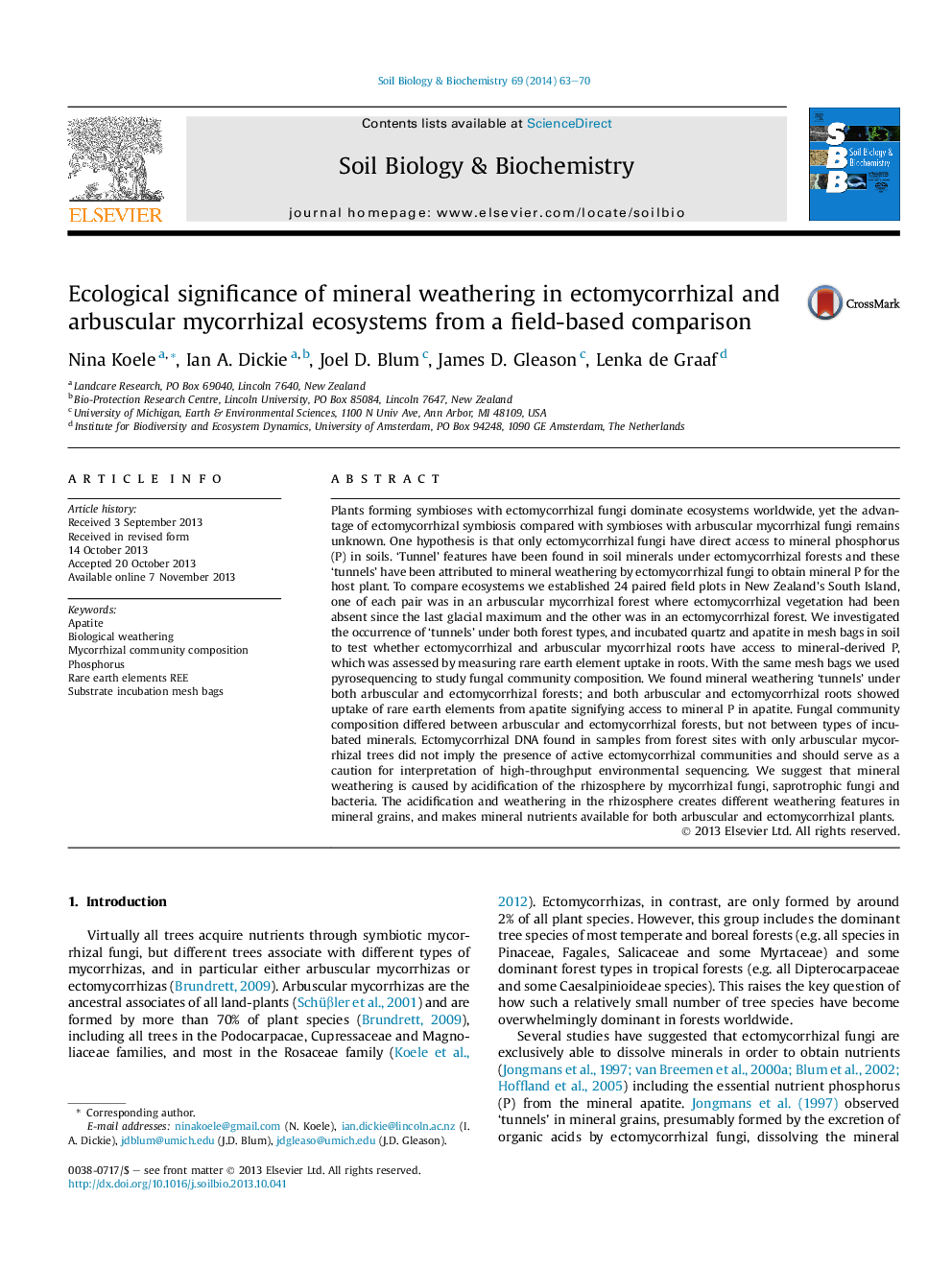| Article ID | Journal | Published Year | Pages | File Type |
|---|---|---|---|---|
| 2024714 | Soil Biology and Biochemistry | 2014 | 8 Pages |
•Arbuscular mycorrhizal forest soils show weathering “tunnels”.•“Tunnels” are attributed to general weathering, not to specific mycorrhizal fungi.•Both arbuscular and ectomycorrhizal roots take up nutrients from apatite minerals.•Fungal community composition is not influenced by different mineral substrates.•Field-based ecosystem contrasts are vital for interdisciplinary ecological research.
Plants forming symbioses with ectomycorrhizal fungi dominate ecosystems worldwide, yet the advantage of ectomycorrhizal symbiosis compared with symbioses with arbuscular mycorrhizal fungi remains unknown. One hypothesis is that only ectomycorrhizal fungi have direct access to mineral phosphorus (P) in soils. ‘Tunnel’ features have been found in soil minerals under ectomycorrhizal forests and these ‘tunnels’ have been attributed to mineral weathering by ectomycorrhizal fungi to obtain mineral P for the host plant. To compare ecosystems we established 24 paired field plots in New Zealand's South Island, one of each pair was in an arbuscular mycorrhizal forest where ectomycorrhizal vegetation had been absent since the last glacial maximum and the other was in an ectomycorrhizal forest. We investigated the occurrence of ‘tunnels’ under both forest types, and incubated quartz and apatite in mesh bags in soil to test whether ectomycorrhizal and arbuscular mycorrhizal roots have access to mineral-derived P, which was assessed by measuring rare earth element uptake in roots. With the same mesh bags we used pyrosequencing to study fungal community composition. We found mineral weathering ‘tunnels’ under both arbuscular and ectomycorrhizal forests; and both arbuscular and ectomycorrhizal roots showed uptake of rare earth elements from apatite signifying access to mineral P in apatite. Fungal community composition differed between arbuscular and ectomycorrhizal forests, but not between types of incubated minerals. Ectomycorrhizal DNA found in samples from forest sites with only arbuscular mycorrhizal trees did not imply the presence of active ectomycorrhizal communities and should serve as a caution for interpretation of high-throughput environmental sequencing. We suggest that mineral weathering is caused by acidification of the rhizosphere by mycorrhizal fungi, saprotrophic fungi and bacteria. The acidification and weathering in the rhizosphere creates different weathering features in mineral grains, and makes mineral nutrients available for both arbuscular and ectomycorrhizal plants.
